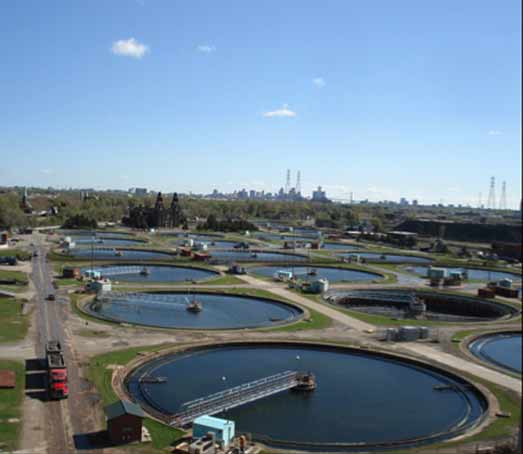Wastewater treatment systems consist of three different and separate functions: Collection, Primary Treatment, and Solids Treatment. Each separate function – and the infrastructure that supports it – have distinct hazards and require customized approaches to maintain worker and facility safety.
Wastewater Treatment Safety
Wastewater collection systems consist of complicated networks of sewers, pipes, lift stations and basins. These collection networks are so vast that operators working on these systems are typically required to wear portable gas detection devices for protection and should conform to confined space safety procedures. At locations with basins for combined sewer overflow, an overall Life Safety/Gas Detection system is required to protect both the workers and the facility from a buildup or release of flammable gases and toxic gases.
Primary treatment is the first treatment step removing approximately half the solids from the wastewater. There are numerous processes during primary wastewater treatment where biohazards such as gases can be created and accumulate to dangerous levels including pump stations, screen and grit filtering, aeration decks, and sedimentation processes.


Every wastewater treatment plant is unique and has unique potential for the release and accumulation of fumes due to local geography and climate. Site history should be reviewed in order to quantify the release and accumulation of hazardous fumes. Wastewater Plant operators should be interviewed to determine dangerous locations and conditions. The possibility of employee exposure to toxic gases, oxygen deficiency, or biological hazards in sewage and wastewater treatment plants should be reviewed with a special focus on potential equipment failures and the safety impact of a power interruption.
Finally, the hazardous materials review for wastewater treatment systems should encompass all gas hazards – including gases brought into the facility for the purpose of treating effluent water and fumes created during the collection and processing of wastewater. These hazardous gases usually include gaseous sulfur dioxide and chlorine entering the site in the form of cylinders or railcars. Gas detection systems are required where these gases are stored as well as used.
While the two most common hazardous gases created during these wastewater treatment processes are methane and hydrogen sulfide, other hazardous gases present include ammonia, chlorine dioxide, hydrogen peroxide, and carbon dioxide. In addition, oxygen depletion can lead to serious injury and even death.
Ino-Tek designs, installs and services municipal wastewater treatment plant gas detection systems to protect people and property. To properly maintain a gas detection system at a wastewater treatment plant, resources must be dedicated to regular calibration and routine evaluation of these systems.
Whether you are building a new facility or have an existing one, talk to one of our Field Service Engineers to make sure it meets all compliance requirements.
